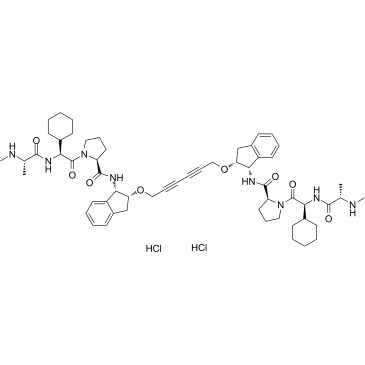AZD 5582 dihydrochloride Suppliers
Total count: 1Updated Date: 2025-11-11 05:25:23

- China(Mainland)
- Contact: Yang
- Phone: 0086-021-52280163
- Email: sales@echemcloud.com
- Website: http://www.echemcloud.com
- Product Name: AZD 5582 dihydrochloride
- Updated Date: 2024-07-15 12:33:11
- Purity: 97.0%
- More information
Inquiry
AZD 5582 dihydrochloride
- CAS Number: 1883545-51-4
- Molecular Formula: C58H80Cl2N8O8
- Molecular Weight: 1088.21

Related product suppliers
Check more product suppliers